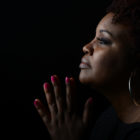
Reducing Room Confinement of Youth in Custody: A Roadmap
|
In recent years, juvenile justice practitioners, researchers and advocates have raised awareness of the harms of room confinement or isolation of youth in detention and residential facilities. Research and empirical knowledge teach us that the practice can negatively impact youth’s developing brains and emotional health, impair youth’s relationships with staff, limit youth’s access to important programming and treatment, and ultimately lead to unsafe facility environments.








